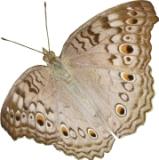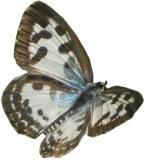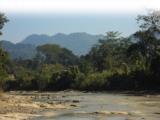Archives
Dehing Patkai Wild Life Sanctuary
 Situated on the south bank of the mighty Brahmaputra, the Dehing Patkai Wild Life Sanctuary has been a source of endless enchanted natural beauties, which the districts of Tinsukia and Dibrugarh of Assam may proudly announce as their own. Being one of the 17 wildlife sanctuaries of Assam, this jewel of North East India is a treasure trove of amazing species of flora and fauna including many a number of endangered species of fauna, avifauna, and flora, a major portion of which is still yet unexplored.
Situated on the south bank of the mighty Brahmaputra, the Dehing Patkai Wild Life Sanctuary has been a source of endless enchanted natural beauties, which the districts of Tinsukia and Dibrugarh of Assam may proudly announce as their own. Being one of the 17 wildlife sanctuaries of Assam, this jewel of North East India is a treasure trove of amazing species of flora and fauna including many a number of endangered species of fauna, avifauna, and flora, a major portion of which is still yet unexplored.
The Dehing Patkai rainforest is a portion of the total 800 sq. kms area of three combined rainforests namely Joypure, Upper Dehing and Dirak. There is no other forest bigger than this. On 13th June, 2004, 111.19 sq. kms of this area had been declared as a protected area - the Dehing Patkai Wild Life Sanctuary. It was a mighty dream envisioned by the environmental activist group of North East India “Nature’s Beckon” led by eminent environmentalist cum Ashoka fellow Soumyadeep Datta. In the late 90’s this part of North East India was brought into the global limelight by Nature’s Beckon. An important cause rose at that time due to the heavy deforestation which occurred due to the setting up of industries, cultivation by the ever increasing population and as well as smuggling of endangered species.
 Though rarely studied with respect to other orders of fauna the order Lepidoptera of the animal kingdom has many species of butterflies and moths including various endangered species and subspecies at Dehing Patkai rainforest. From time immemorial butterflies have been attracting human attention with their amazing colours and structure. As said by Rachel Reuben, “No group of insect is more charismatic than the butterflies.” Butterflies, being an important part of the ecosystem can be regarded as the best biotic indicators for forecasting climatic change and also for species richness monitoring system of an ecosystem for, the healthy presence of butterflies indicates the healthy status of an ecosystem. These amazing colourful jewels of the Lepidoptera order have been attracting me since childhood and this strong affinity results in my frequent visits to the Dehing Patkai Wild Life Sanctuary which is a heaven for butterflies due to its diversity of host plant species and geographical localition. Being a tropical rainforest, the Dehing Patkai Wild Life Sanctuary has four layers of vegetation, each with different plants and animals adapted to life in that particular area, viz., Emergent, Canopy, Understorey and Forest floor. Each of the layers with its individual height of flora host a particular set of butterflies which are responsible for the pollination process and gene flow activities of that particular layer. The diverse fauna and the occurrence of the longest monsoon make this part of North East India a heaven for 50% of the total butterfly species of India.
Though rarely studied with respect to other orders of fauna the order Lepidoptera of the animal kingdom has many species of butterflies and moths including various endangered species and subspecies at Dehing Patkai rainforest. From time immemorial butterflies have been attracting human attention with their amazing colours and structure. As said by Rachel Reuben, “No group of insect is more charismatic than the butterflies.” Butterflies, being an important part of the ecosystem can be regarded as the best biotic indicators for forecasting climatic change and also for species richness monitoring system of an ecosystem for, the healthy presence of butterflies indicates the healthy status of an ecosystem. These amazing colourful jewels of the Lepidoptera order have been attracting me since childhood and this strong affinity results in my frequent visits to the Dehing Patkai Wild Life Sanctuary which is a heaven for butterflies due to its diversity of host plant species and geographical localition. Being a tropical rainforest, the Dehing Patkai Wild Life Sanctuary has four layers of vegetation, each with different plants and animals adapted to life in that particular area, viz., Emergent, Canopy, Understorey and Forest floor. Each of the layers with its individual height of flora host a particular set of butterflies which are responsible for the pollination process and gene flow activities of that particular layer. The diverse fauna and the occurrence of the longest monsoon make this part of North East India a heaven for 50% of the total butterfly species of India.
There are about 18,000 species of butterflies found in different parts of the world. These butterflies are broadly classified into two superfamilies- Hesperioidea which includes all the skippers and Papilionoidea which includes all the rest. The Papilionoidea are said to be true butterflies and they include four families – Papilionidea, Pieridae, Nymphalidae, and Lycaenidae.
| The diverse fauna and the occurrence of the longest monsoon make this part of North East India a heaven for 50% of the total butterfly species of India. |
I have been to the Dehing Patkai Wild Life Sanctuary several times and each time I had the privilege of enjoying warm Phakial hospitality offered by Tai Phakey Ecotourism Camp situated at Tipam Phakey village, a village of the Tai Phakey community of Assam. The Tai Phakey is a small but well cultured community which is believed to be originated from Myanmar. On the bank of Burhidehing river there is a beautiful village named Tipam Phakey. There is an age old beautiful Buddhist monastery at Tipam Phakey village which is worth visiting. A number of young boys from this village were actively associated with the rainforest conservation movement of Assam initiated by Nature’s Beckon. Tai Phakey Eco tourism is a venture of these young activists of this rainforest conservation movement which has been formed in order to enhance ecotourism in North East India as well as inspire people to learn about the importance of rainforest and its conservation. Built in ethnic Phakial style, Tai Phakey Ecotourism has four beautiful Chang Ghar type cottages which are made using eco friendly materials where one can enjoy the full experience of the Tai Phakey lifestyle. The best part of this Ecotourism camp is its adventurous trekking tour into the depths of the rainforest guided by eminent rainforest conservation activists followed by bird watching, butterfly watching, wildlife photography etc. To me, there is no better choice than Tai Phakey Ecotourism camp where I get everything for my butterfly watching in the depths of Dehing Patkai Wild Life Sanctuary.
 Basking is an important activity of butterflies to regulate the body temperature and thus to fasten up their physiological processes in the warm sunlight and as such butterflies are active during the day. Therefore the best time and period to observe butterfly is in sunny weather usually an hour after sunrise from just after the rainy season till November –December because during this time, the growth of host plants for butterflies is abundant. Besides this, there is another butterfly season from March to May during which plants grow new leaves.
Basking is an important activity of butterflies to regulate the body temperature and thus to fasten up their physiological processes in the warm sunlight and as such butterflies are active during the day. Therefore the best time and period to observe butterfly is in sunny weather usually an hour after sunrise from just after the rainy season till November –December because during this time, the growth of host plants for butterflies is abundant. Besides this, there is another butterfly season from March to May during which plants grow new leaves.
On my way to the Dehing Patkai Wild Life Sanctuary during the period of Mid of July- December, I observed several butterflies near Tipam Nala or by the Namsang river. My early morning treks into the rainforest resulted in the observation of many a species of butterflies and moths. The record list prepared by me includes common butterflies such as the Grey Pansy (Junonia atlitis) to very rare butterflies like Silver Royal (Ancema blanka minturna). This shows the wide butterfly diversity in Dehing Patkai Wild Life Sanctuary.
 Butterflies like the Silver Royal (Ancema Blanka Minturna), Dark archduke (Lexias dirtea khasiana), are reported to be seen very rarely in the Indian subcontinent. Though diverse in species, butterflies are seldom studied in North East India. The threat of the extinction of many unidentified species can’t be ignored. With growing human population and industrialization, forests are continuously losing land and this has had a devastating impact on forest ecology. Destruction of forests is leading to the extinction of many flora and dependent fauna which includes species of these angelic flying creatures. Keeping in view their importance in the pollination process, it has become our primary responsibility to conserve the tropical rainforests of North East India which has been a great habitat for the butterflies. The Dehing Patkai Wild Life Sanctuary is a small part of the patch of the rainforest stretching over parts of Upper Assam and Arunachal Pradesh. Only an area of 111.19 sq. kms has been declared as a sanctuary as a result of the strong rainforest conservation movement initiated by Nature’s Beckon and my survey was done within this range which will continue for the next few years. I can only guess at the presence of more exotic and rare species of angelic butterflies in the remaining part of the rainforest area of North East India. These rainforests are biodiversity hotspots which need to be conserved so that we can leave behind a green earth with such majestic species for our descendants in the future.
Butterflies like the Silver Royal (Ancema Blanka Minturna), Dark archduke (Lexias dirtea khasiana), are reported to be seen very rarely in the Indian subcontinent. Though diverse in species, butterflies are seldom studied in North East India. The threat of the extinction of many unidentified species can’t be ignored. With growing human population and industrialization, forests are continuously losing land and this has had a devastating impact on forest ecology. Destruction of forests is leading to the extinction of many flora and dependent fauna which includes species of these angelic flying creatures. Keeping in view their importance in the pollination process, it has become our primary responsibility to conserve the tropical rainforests of North East India which has been a great habitat for the butterflies. The Dehing Patkai Wild Life Sanctuary is a small part of the patch of the rainforest stretching over parts of Upper Assam and Arunachal Pradesh. Only an area of 111.19 sq. kms has been declared as a sanctuary as a result of the strong rainforest conservation movement initiated by Nature’s Beckon and my survey was done within this range which will continue for the next few years. I can only guess at the presence of more exotic and rare species of angelic butterflies in the remaining part of the rainforest area of North East India. These rainforests are biodiversity hotspots which need to be conserved so that we can leave behind a green earth with such majestic species for our descendants in the future.

